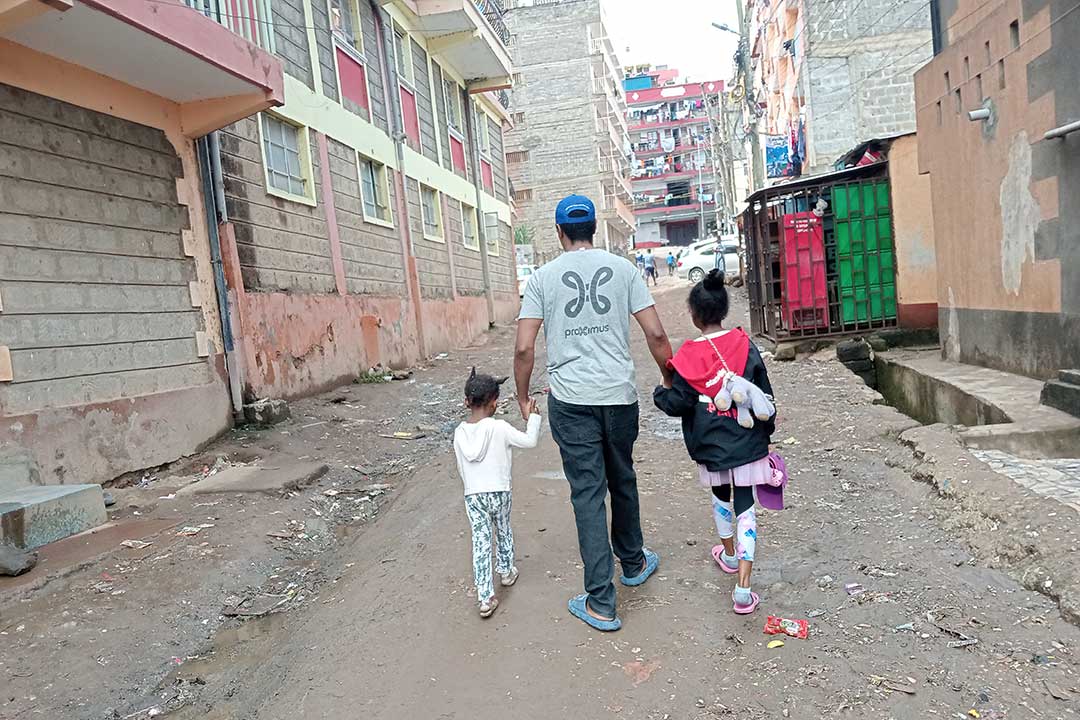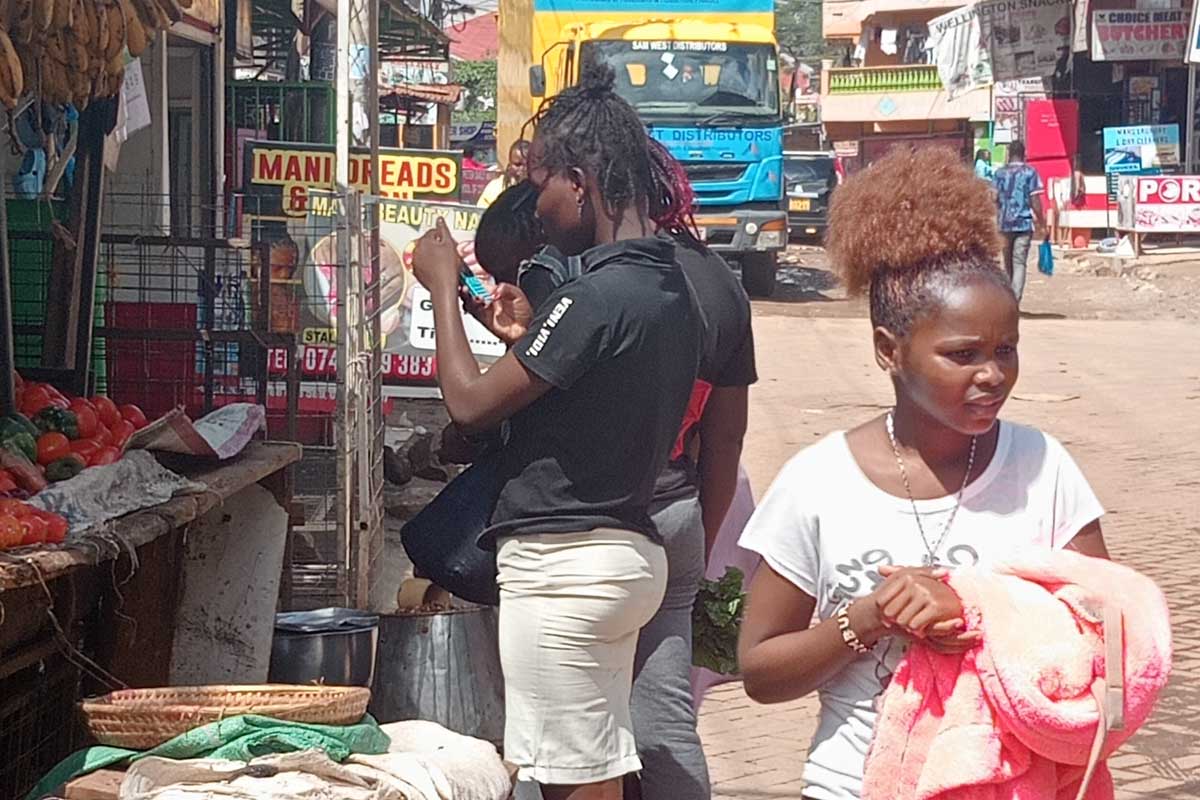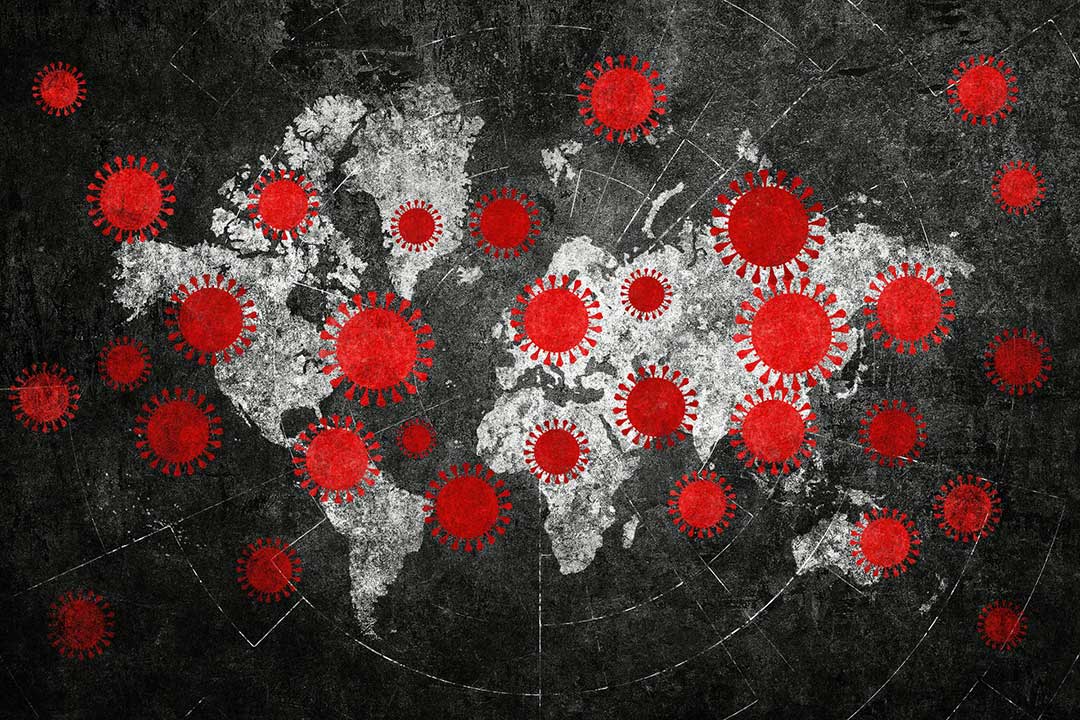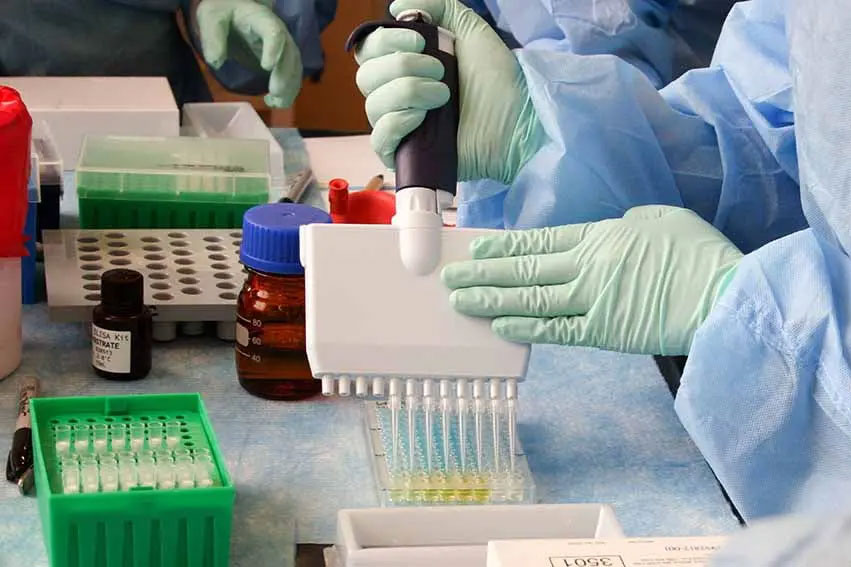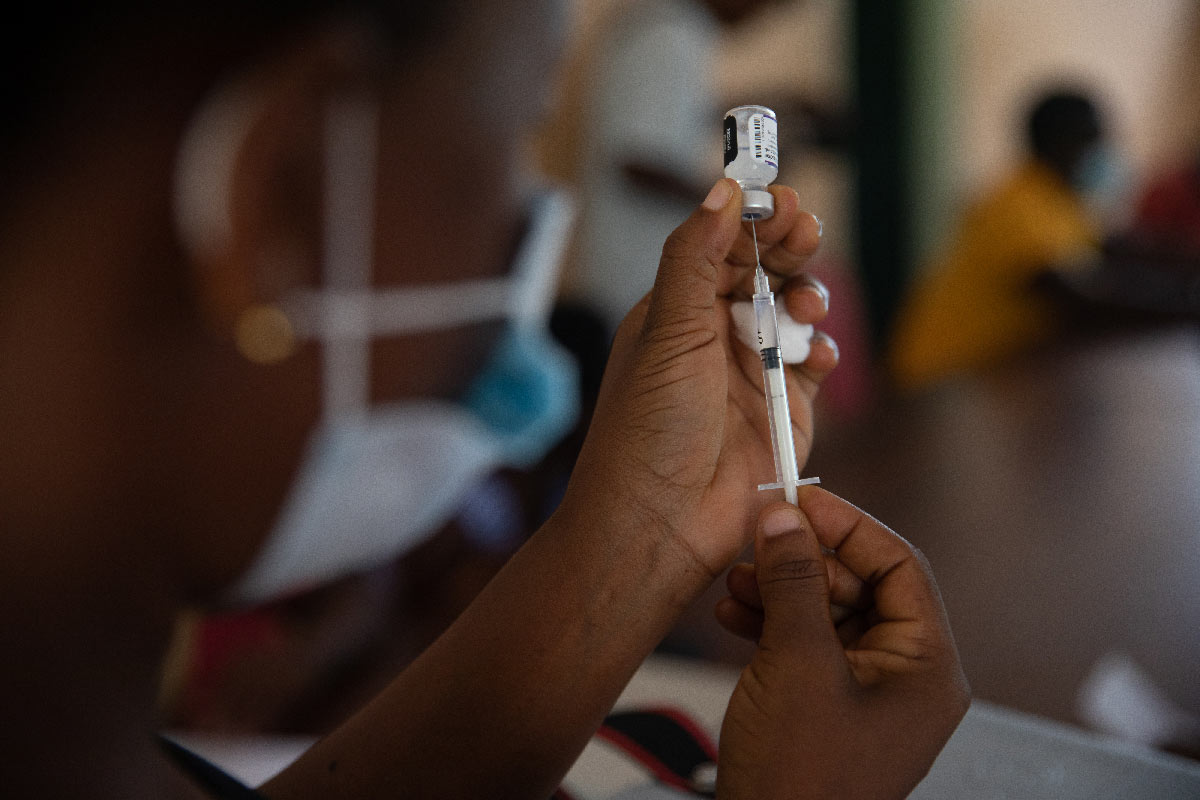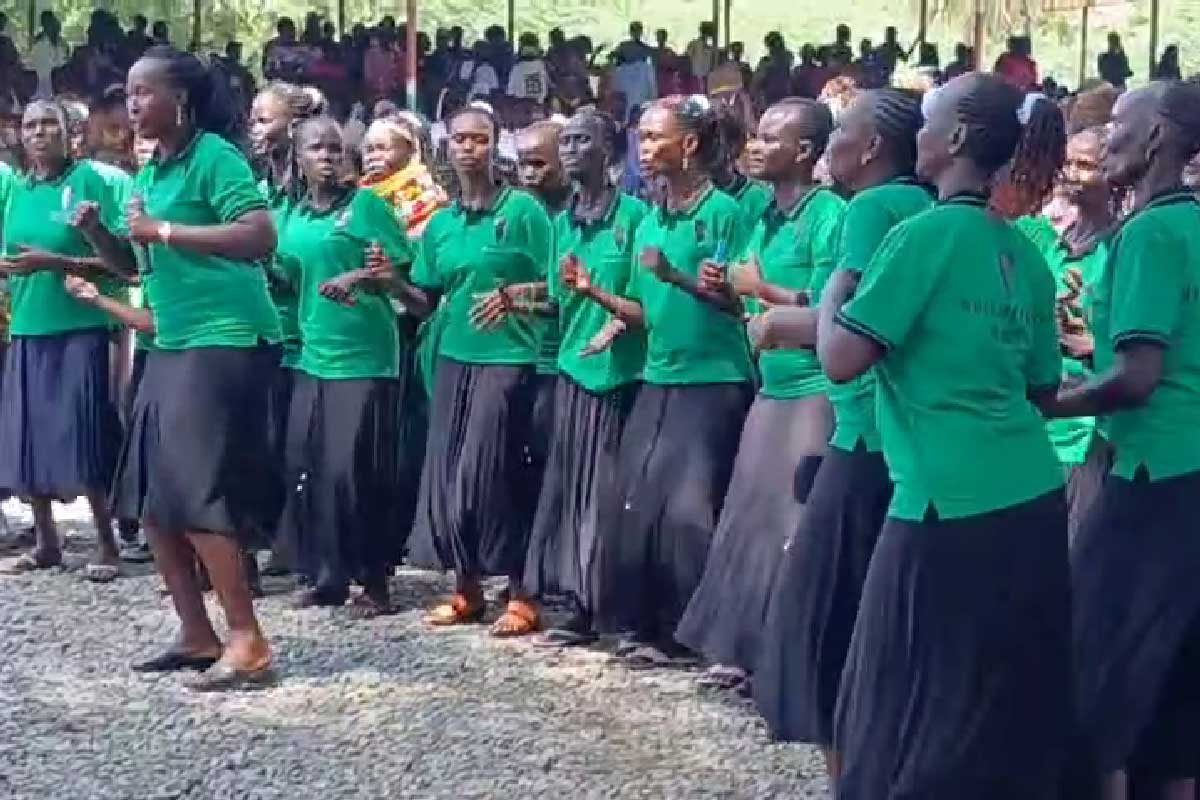In Kenya’s Masaailand, “Guardian mothers” take up the HPV vaccine cause
Masaai women traditionally trusted to guide and protect mothers in childbirth are shepherding younger girls to safety from cervical cancer. Local health administrators say they see an uptick in vaccination rates where the “Olkinyi” are at work.
- 2 September 2025
- 7 min read
- by Gitonga Njeru
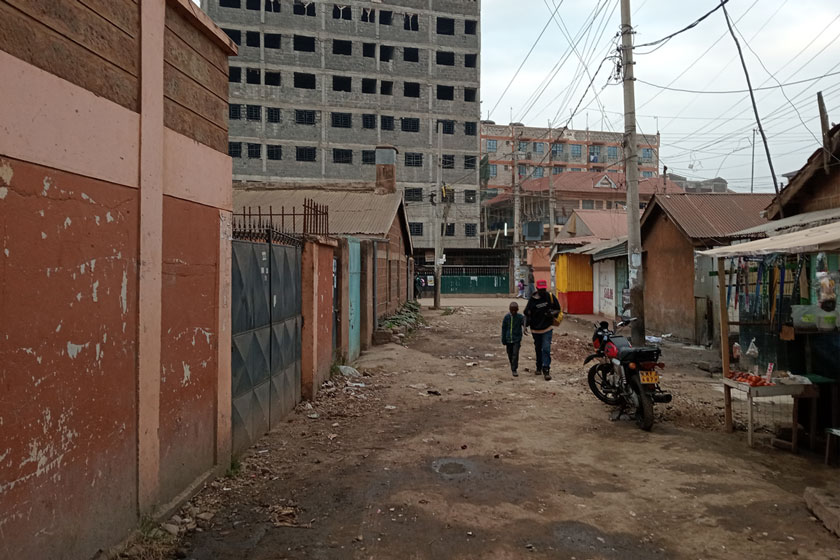
At dawn in Inkisanjani village, near the Kenya-Tanzania border, the sound of lowing cattle mixes with the voices of children as they head toward the primary school. Outside her homestead, 70-year-old Debra Lelapei, an Olkinyi, or “Guardian mother,” ties a bright red shuka around her shoulders. She is not only preparing for a day assisting women in childbirth – a traditional role for women like her – but also for a new kind of mission: walking young girls to the nearest clinic to receive the human papillomavirus (HPV) vaccine that will shield them from cervical cancer.
Nationwide, cervical cancer casts a long shadow. Each year, more than 5,000 Kenyan women are diagnosed, and at current rates, over half will die. In the remote communities of Maasailand, where early marriage, young childbearing, and typically great distances from health centres increase the risks, Olkinyi like Lelapei are quietly bridging tradition and modern medicine to protect the next generation.
Guardian mothers
“Inkisanjani Primary School is near my home; the adjacent Inkisanjani Medical Clinic sometimes has vaccine shortages,” she told VaccinesWork. On the sporadic occasions that vaccines are unavailable locally, a long journey awaits. “Reaching Loitokitok, which has many government health centres, is approximately 199 kilometres.”
That translates to 2.5 hours each way on public transport, she explains – which means that getting a girl vaccinated against HPV might demand a full day of travel, a tall order for parents with full days of work and often many children to look after. “Parents trust me; girls accompany me to Loitokitok. I sometimes cover transport costs from my meagre resources; many families live below the poverty line,“ she adds.
It’s not easy, but it’s work she takes seriously. “On average, during school holidays, I get at least ten girls vaccinated each week,“ she states. “Our girls are our future; we must vaccinate as many as possible with the cervical cancer vaccine.”
“We’ve seen too many daughters suffer and die. When health workers spoke of protecting them, we listened,” Lelapei adds.
“We need the Olkinyi”
Lelapei isn’t the only Olkinyi to have been approached by local health officials for help.
“We must increase awareness, early screening, and community engagement to improve HPV vaccine uptake as part of our efforts to eliminate cervical cancer,” explained Dr Sharon Sironka, Public Health Officer in Kajiado County. “[For that] we need the Olkinyi; they are a vital asset and help us reach the most remote and impossible parts of the county. They are highly trusted and respected by their communities.”
“Some areas are remote, with insecurity and traditional beliefs against vaccination hindering programmes,” Lelapei explains. “Many cultural beliefs are entrenched, so we must mediate between Maasai families and health workers.”
Now her days weave tradition and advocacy. She continues assisting with births, offering comfort and guidance to mothers, but her counsel now extends further. During home visits or gatherings, she integrates conversations about the HPV vaccine’s importance. “I tell mothers, ‘Just as we protect our cattle from disease, so too must we protect our daughters,’” she explains. “It is a shield, given by doctors, to keep them strong and healthy.”
The government counts three million young girls aged 10-14 in its HPV vaccination drive, and relies on a broad church of partners to make sure the health system reaches as many of them as possible. One government partner is the NGO Entepesi Kenya, located in Loitokitok, Kajiado County, which works closely with the Olkinyi.
“We train them on safe birth practices. Sometimes they acquire HIV delivering babies without gloves,” said Susan Methamo, a co-founder of Entepesi Kenya. “On HPV, we also train them on awareness creation and, in some cases, how to administer the vaccine dose to girls,” she added.
“Through dedicated outreach, we bridge the information gap – by working directly with community members and fostering local champions like the Olkinyi. Equipping Olkinyi with accurate, accessible HPV vaccine information isn’t just about facts; it’s about building trust and demonstrating how this vaccine protects our daughters from cervical cancer.
“It’s about dispelling myths and ensuring vaccine benefits are understood and embraced by all,” said Methamo.
Rising levels of protection
Kenya continues offers the HPV vaccine free of charge to girls aged 10–14. Despite encouraging improvements in recent years, however, coverage rates continue to lag behind targets, with 62% of age-eligible girls receiving the jab in 2023, rising to 79% in 2024.
Challenges, including misinformation, vaccine hesitancy, and accessibility issues, persist. Government and partner organisations actively address these barriers through community engagement, public awareness campaigns and school-based vaccination drives.
Have you read?
And in Maasailand, the Olkinyi are proving what a powerful local voice can do. Senaipei Tipis is an Olkinyi in her late 60s, known in her community for her captivating storytelling. Tipis understands information must resonate, so she presents it in a relatable way. She uses parables and traditional narratives to explain vaccination, often likening the vaccine to a protective charm warding off evil spirits of sickness.
“Before, when health teams came, some people were afraid, thinking it was foreign,” Tipis recounts.
“But when we, the Olkinyi, speak, they listen. They know we have their best interests [in mind],” she adds.
Vital allegiance
Tipis confirmed that the Olkinyi work closely with community health workers (CHWs). But she insists the government needs to hire more CHWs for maximum vaccination success.
“We take them to the most remote areas where only Olkinyi can reach. But they are not many here. Sometimes we go months without noticing their physical presence,” said Tipis.
The collaboration between the Olkinyi and the formal health sector testifies to community-led initiative’' power. Dr Sironka explains, “The Olkinyi are indispensable. We must work diplomatically with them to achieve our goals. We can set up vaccination camps, but without their advocacy, our reach would be severely limited, especially in remote homesteads. They break down cultural barriers and misinformation, acting as our primary point of contact and trust.”
She says there have been “significant increases in HPV vaccine uptake where the Olkinyi are actively engaged,” and adds: “This is motivating.”
Mary Letoo, a confident ten-year-old who recently received her second HPV vaccine dose, credits Lelapei for her protection. “Lelapei told my mother and father about it,” Mary shyly explains. “She said it would keep me safe when I grow up. And she walked with us to the clinic.”

Mercy’s mother, Sarah, nods. “We trust the Olkinyi. They are the pillar of hope in many Maasai communities. They have always guided us. When Lelapei spoke, we knew it was for Mercy's good,” Sarah adds.
Local community leaders also acknowledge the Olkinyi’s impact. Chief Ole Takona, an 87-year-old respected elder, emphasises their role in building awareness. “The Olkinyi are the custodians of our traditions and the health of our people,” he asserts. “Their voice carries immense weight. They have helped us understand that modern medicine, when brought by trusted hands, can work alongside our traditions to ensure future generations’ well-being.”
Chief Takona says his community is petitioning the local government to train more Olkinyi to administer vaccines in areas where health workers are scarce. “These elderly mothers have long been an asset to our Maasai Communities. They have saved lives,” asserts Takona.
Insajalla Tobiko, a CHW, says, “The Olkinyi are an asset. Without them, death rates would be high among girls in Maasai lands of Kajiado and Narok. Many embrace modern cultures and medicine. We often have limited resources, and my monthly stipend is just 5,000 shillings (less than US$ 50). We often traverse large tracts of terrain,” she says.
Dr Rose Jalango, head of the National Vaccination and Immunization Program, confirms the government’s strategy for increasing HPV vaccine uptake recognises community engagement’s importance. “While national campaigns and health facility-based vaccinations are vital, integrating traditional leaders and community health volunteers, such as the Olkinyi, is key for reaching underserved populations,” she says. “Future campaigns aim to further empower these influential women elders through additional training and resources, strengthening their capacity,” says Dr Jalango.
